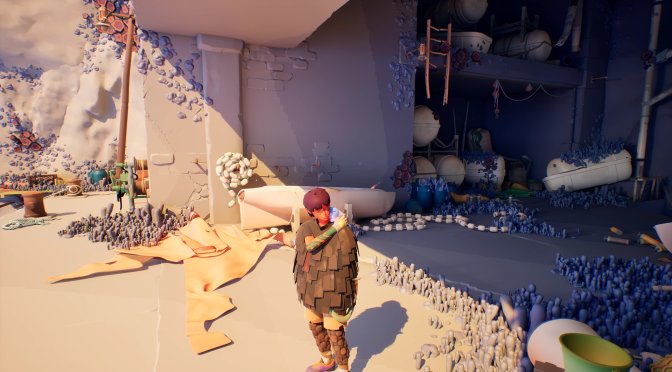Jusant is a new action-puzzle climbing game that uses Unreal Engine 5 and takes advantage of both Lumen and Nanite. And, unlike Fort Solis and Immortals of Aveum, Jusant appears to be running smoothly on PC. Thus, we’ve decided to share a Native 8K/Max Settings video of Jusant running on an RTX 4090, as well as our initial performance impressions of it.
In order to capture this video, we used an AMD Ryzen 9 7950X3D, 32GB of DDR5 at 6000Mhz, and NVIDIA’s RTX 4090. We also used Windows 10 64-bit and the GeForce 536.99 driver. Furthermore, we’ve disabled the second CCD on our 7950X3D.
As DON’T NOD noted, this preview build is not representative of the performance of the final game. However, and contrary to other UE5 games, Jusant already runs great. So that’s at least good news for those interested in this title.
Strangely enough, the game does not support Intel Xess, NVIDIA DLSS 2 or DLSS 3. Instead, the only available upscaling technique is AMD’s FSR 2.0. Let’s hope that the final version will support DLSS 2 and XeSS.
At Native 4K/Max Settings, our NVIDIA RTX 4090 was able to provide a smooth gaming experience. During our benchmark sequence, there was only one scene in which our framerate dropped to 58fps. For the rest of the test, our RTX 4090 was able to provide framerates higher than 60fps. As for Native 8K/Max Settings, the RTX 4090 can push framerates between 24fps and 30fps.
As said, the good news is that Jusant takes advantage of both Lumen and Nanite. Thus, there aren’t any geometry or object pop-ins. Now while its scope is smaller than Immortals of Aveum or Fort Solis, Jusant clearly shows that developers can use these features without completely destroying a game’s performance.
Jusant will officially release on October 31st.
Enjoy this 8K video for Jusant and stay tuned for more!

John is the founder and Editor in Chief at DSOGaming. He is a PC gaming fan and highly supports the modding and indie communities. Before creating DSOGaming, John worked on numerous gaming websites. While he is a die-hard PC gamer, his gaming roots can be found on consoles. John loved – and still does – the 16-bit consoles, and considers SNES to be one of the best consoles. Still, the PC platform won him over consoles. That was mainly due to 3DFX and its iconic dedicated 3D accelerator graphics card, Voodoo 2. John has also written a higher degree thesis on the “The Evolution of PC graphics cards.”
Contact: Email


